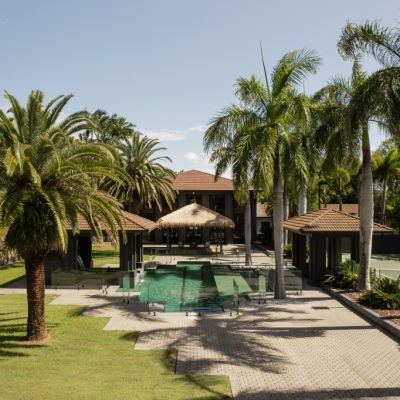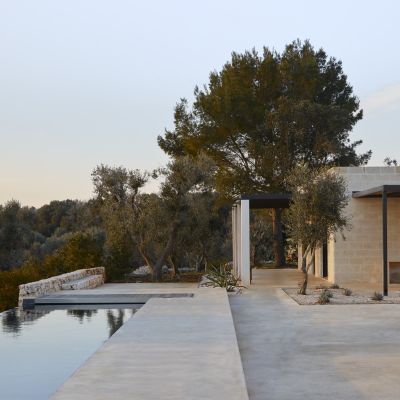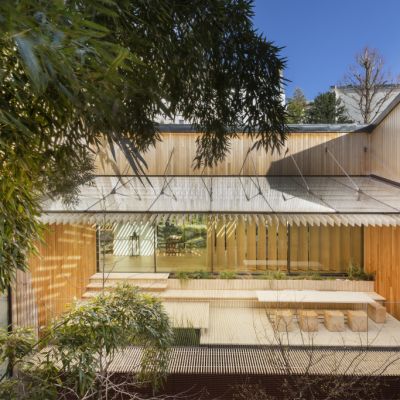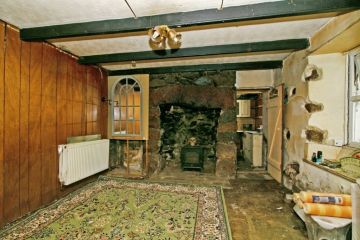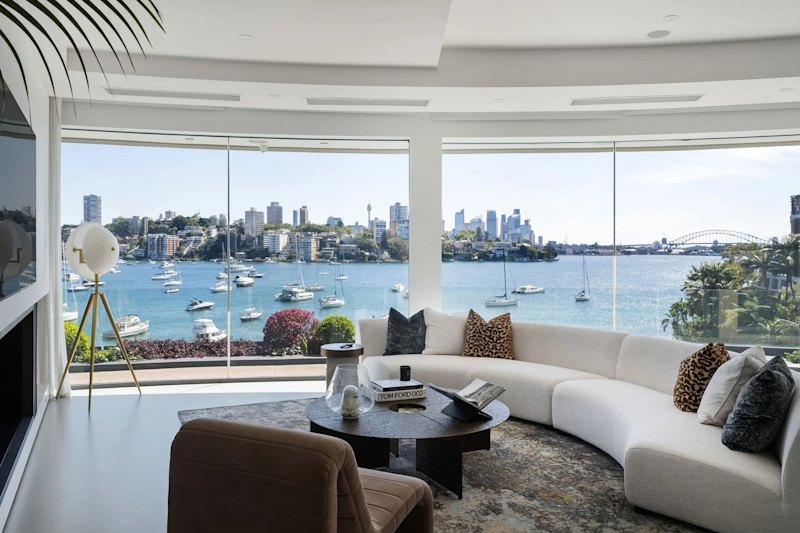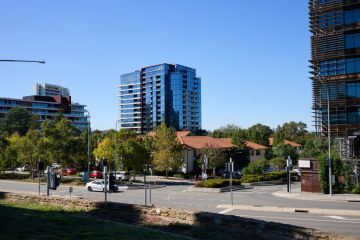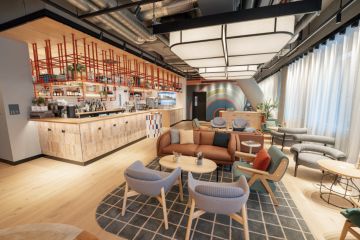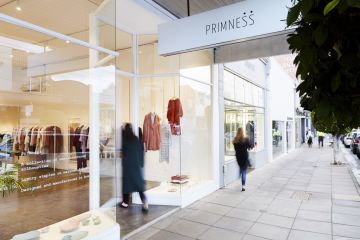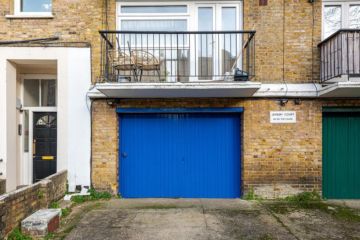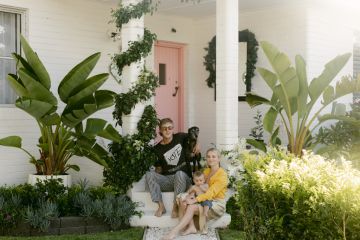This modernist masterpiece in central Portugal is a nod to Frank Lloyd Wright
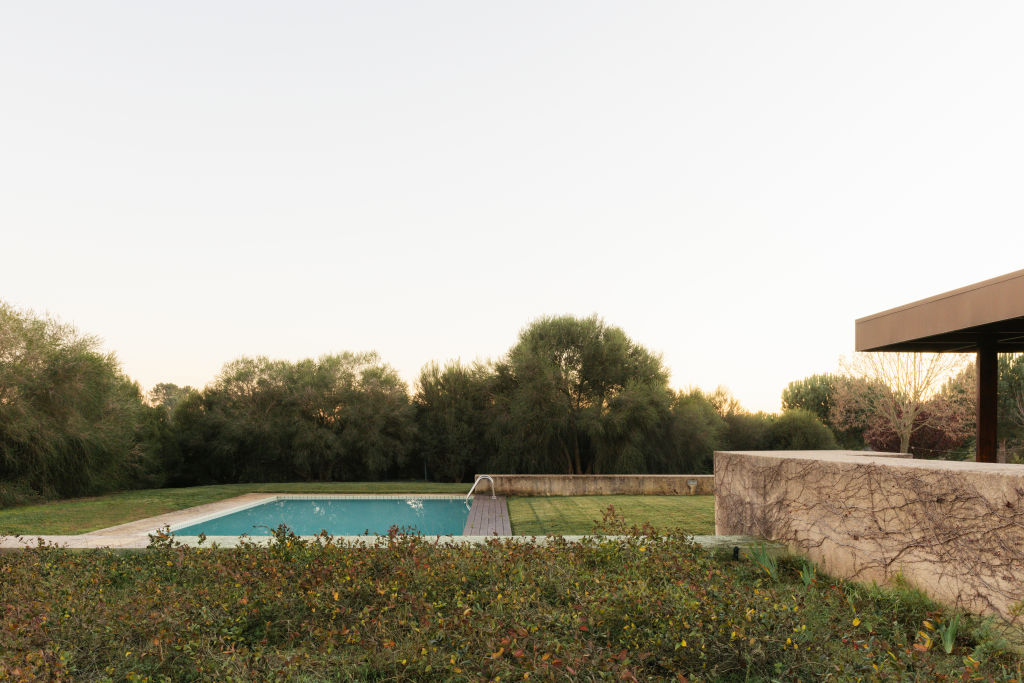
Retreating to the country home is a chance to immerse yourself in nature, so it stands to reason that a country home should also share a strong connection with its natural environment.
It’s this ethos behind the design of The Harvest House. Located in central Portugal, about an hour from Lisbon, the stunning modernist architectural gem is currently listed for sale with Fantastic Frank Lisbon.
Sellers Manuel Pelicano Antunes and Paula Santos Ferreira say the home and surrounding space resulted from a simple idea: to live in harmony without damaging the landscape.
“Before creating the project, we carried out a dowsing study to evaluate the earth’s energies and identified places to live or have animals, the most suitable places for building a house and water reserves,” Antunes says.
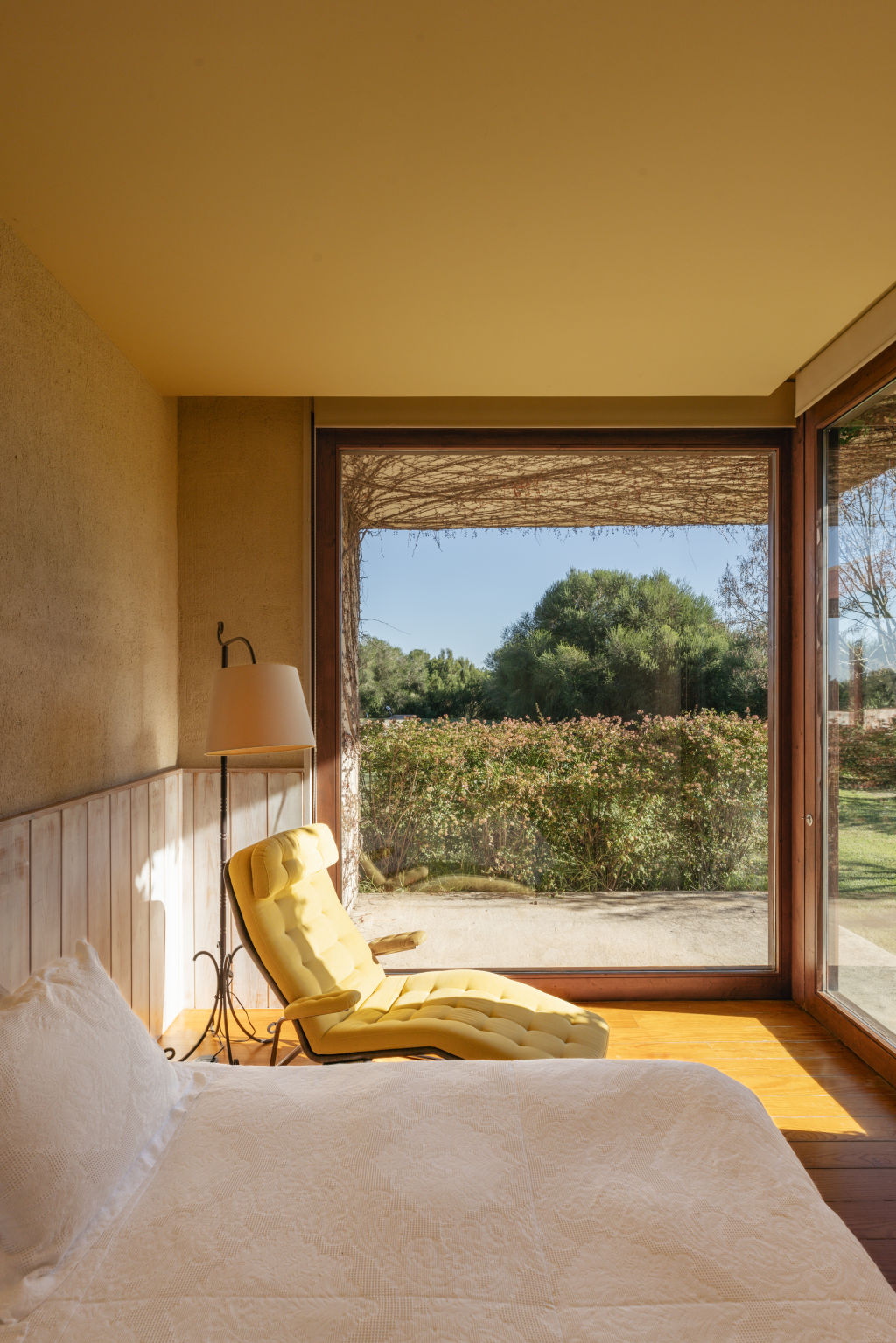
For the home, award-winning Portuguese/Norwegian firm Cerejeira Fontes Architects was engaged, and the design takes its cues from the architecture of Alvar Aalto and Frank Lloyd Wright and Portugal’s own capital.
“Our reference was and will always be the headquarters building of the Calouste Gulbenkian Foundation, in Lisbon, a project from the ’60s by architects Ruy Jervis d’Athouguia, Pedro Cid and Alberto Pessoa, as well as the surrounding park, designed by landscape architects Antonio Viana Barreto and Goncalo Ribeiro Telles,” Antunes says.
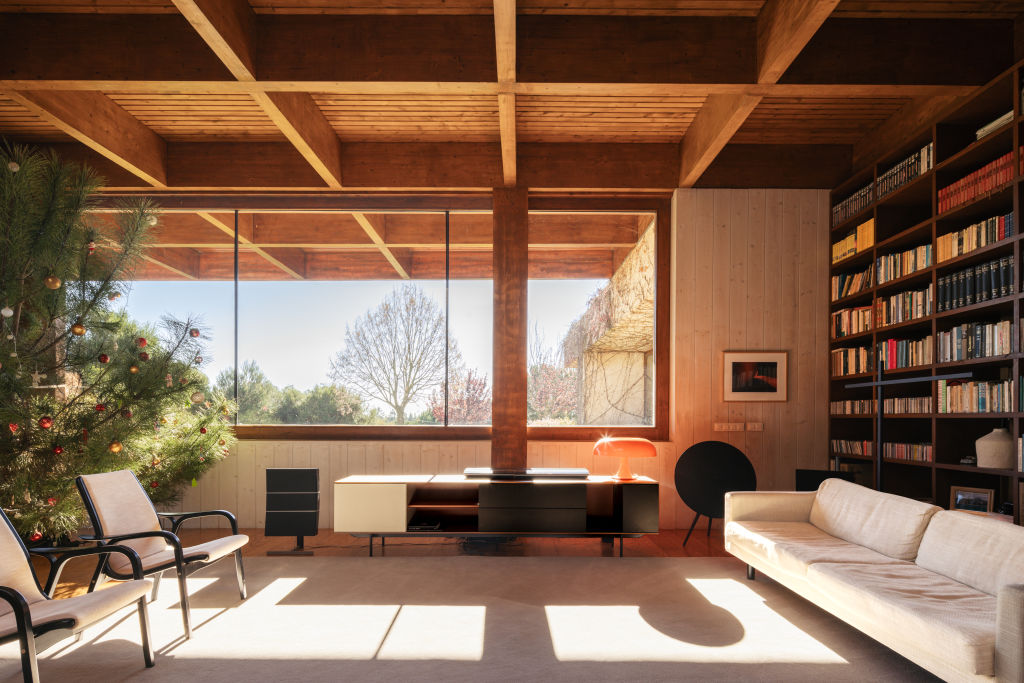
The house was built between 2008 and 2010, and the resulting design beautifully blends simplicity, lightness of space, natural materials and beauty with a focus on the relationship between indoors and outdoors.
A sculpturesque wooden pivot door welcomes you into the main living space. The expansive living room is adorned with large windows and an adjacent study and seamlessly connects to the kitchen and dining area. On one side, the living spaces lead to an outdoor terrace, garden and pool. The other side connects to a wing housing three bedrooms and two bathrooms.
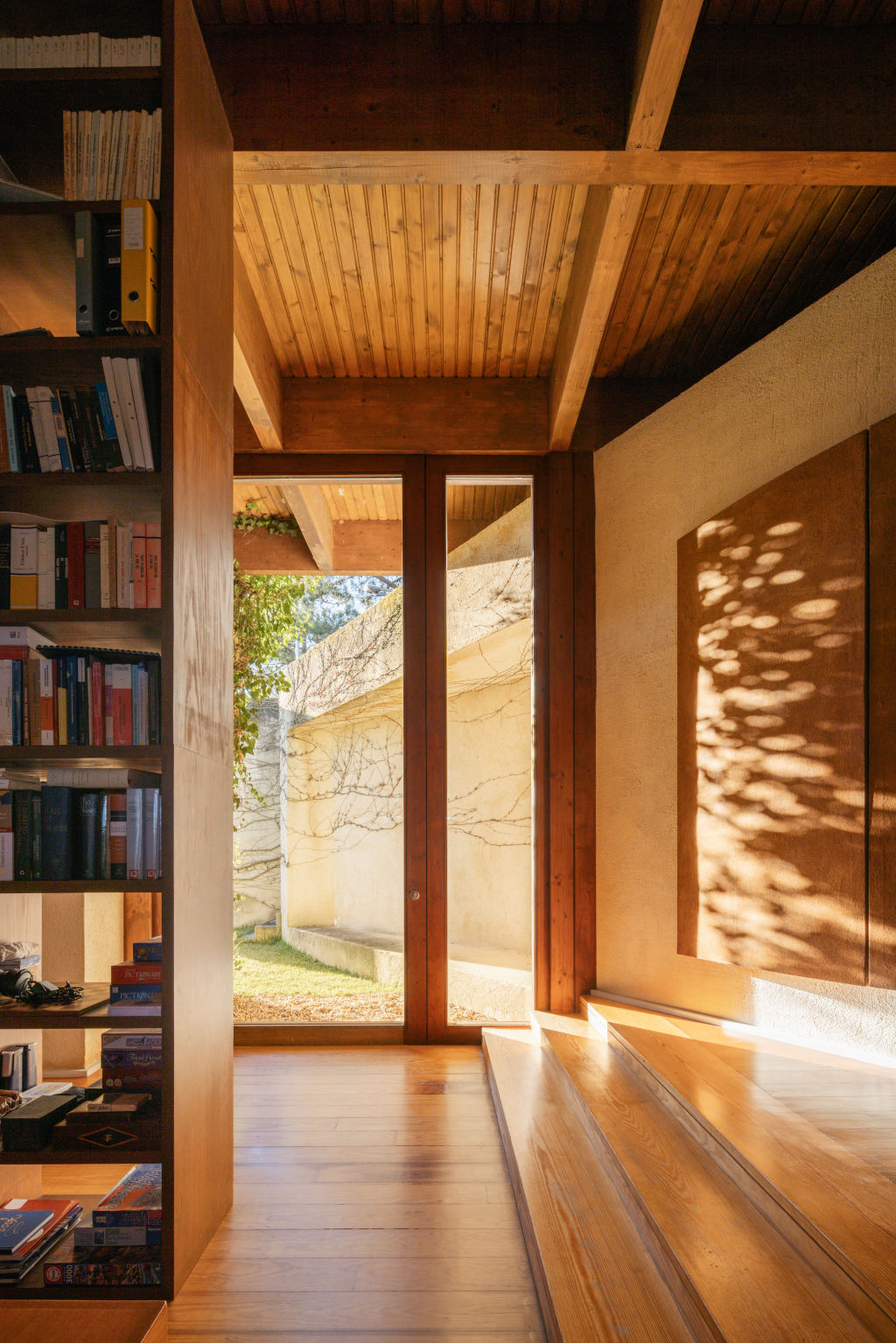
Throughout are design features that further enhance the connection between inside and out. Ample windows provide panoramic 360-degree views of the expansive estate and beyond. A skylight in the living room allows in natural light, as does another in the stunning bathtub room.
“For this bathroom, we imagine lying in the bathtub looking at the sky, which at night is especially inviting due to the faint light pollution,” Ferreira says.
“The room gives a feeling of depth. The squares of the wood give rhythm and softness, as if allowing us to glide and want to look at everything. The windows appear as large natural paintings, conveying a feeling of well-being and contact with nature.”

The final room in the home is circular, with blue walls, serving as a tranquil meditation space overlooking a pond.
The commitment to honouring the environment carries through the home, from an eco-conscious design to mindful use of local materials, including ceramics and lioz marble.
“It is a house inspired by the simple houses of the Portuguese region of Alentejo and its balconies that filter the heat, serve to rest the body and also support the display of local products,” Ferreira says.
“The walls are a mixture of lime, cement, and sand from the land, which allows good thermal behaviour and avoids paint, varnish, et cetera. The sand gives a texture and colour similar to the soil of the place where the house is located. The wooden roof and frames provide welcome, comfort and charm.”
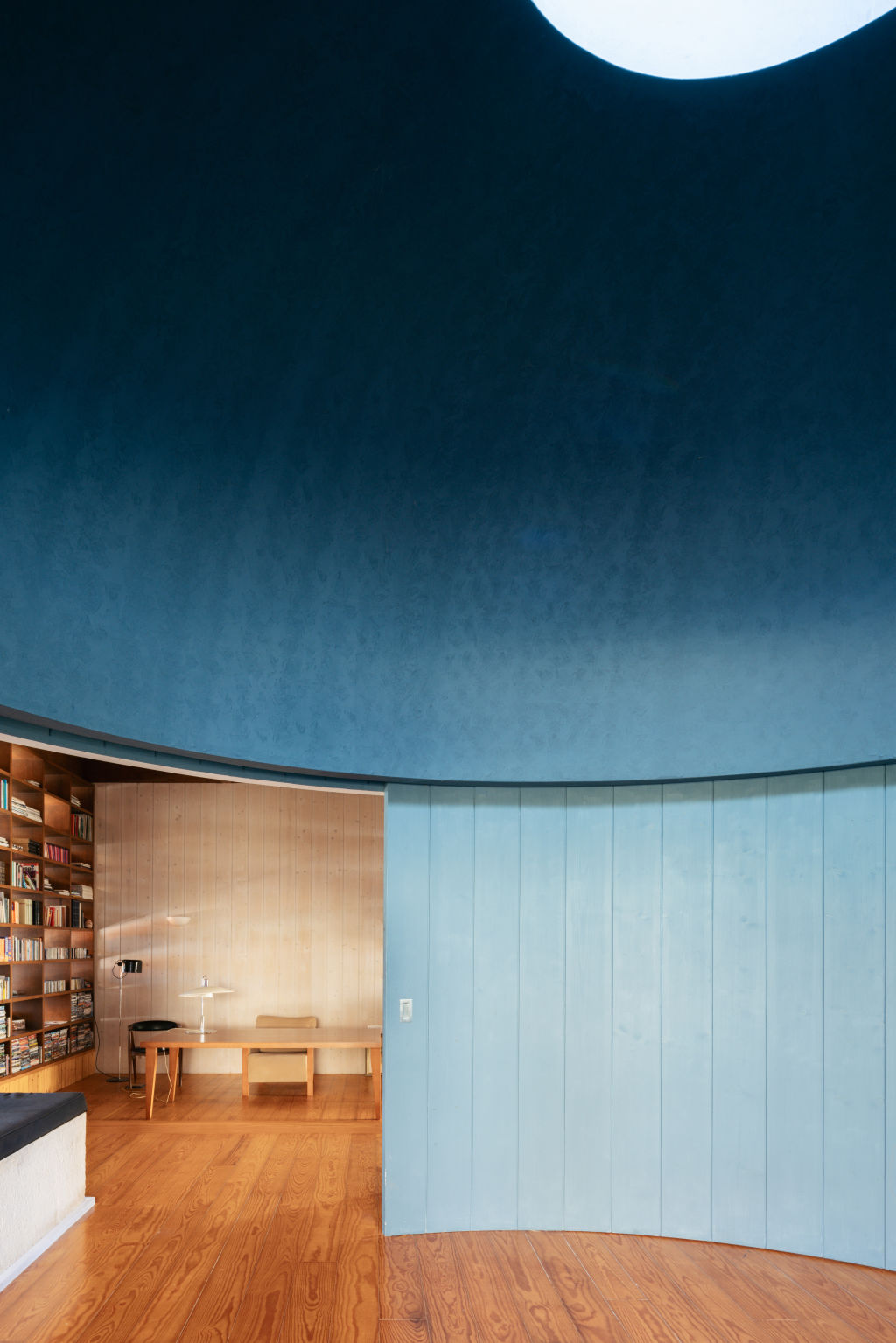
The house is in the Santarem district, an area focused on agriculture with large farms dedicated to wine production and breeding Lusitano horses. Some of The Harvest House’s 20-hectare estate is currently devoted to high-value organic farming, supplying renowned restaurants and hotels.
While the Portuguese capital of Lisbon is not far away, Santarem is a place for a slower, more mindful way of life.
“In this part of the country, life tends to be calmer, and you can enjoy walks in the countryside or going to the beach. The food is healthier due to its proximity to producers and there are several organic farms,” Antunes says.
“[The Harvest House] is a multipurpose space, for work, but also for rest and silence, where you can cook and welcome friends with great joie de vivre. What makes it truly unique is the ‘nest’ atmosphere, simplicity and care for small details. All spaces are used, which allows the house to be lived in daily.”
We recommend
We thought you might like
States
Capital Cities
Capital Cities - Rentals
Popular Areas
Allhomes
More
